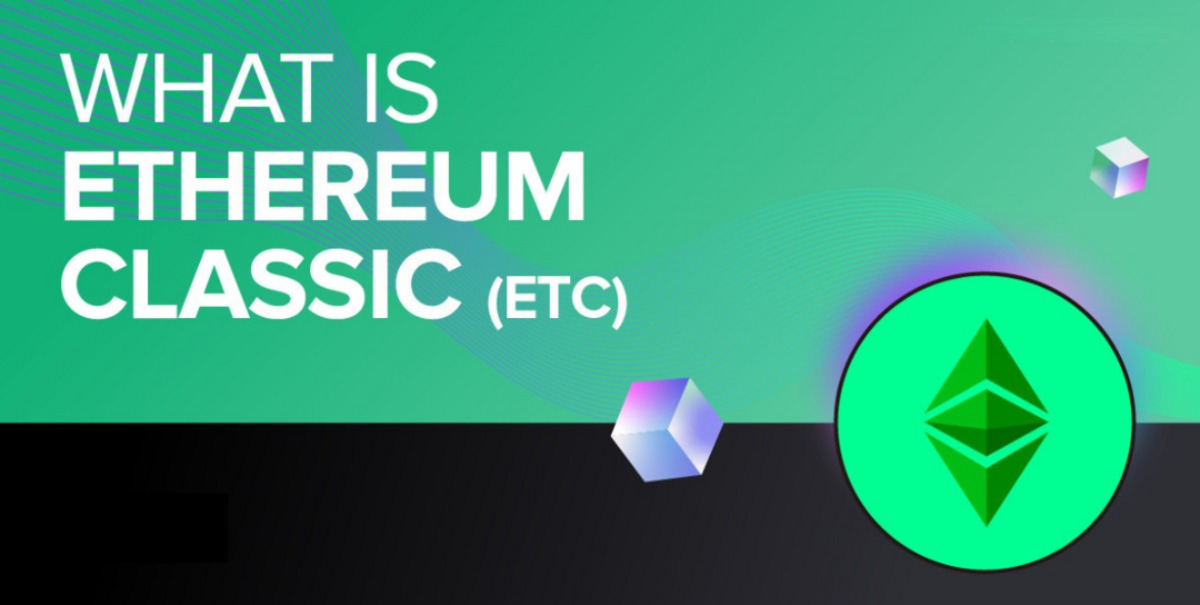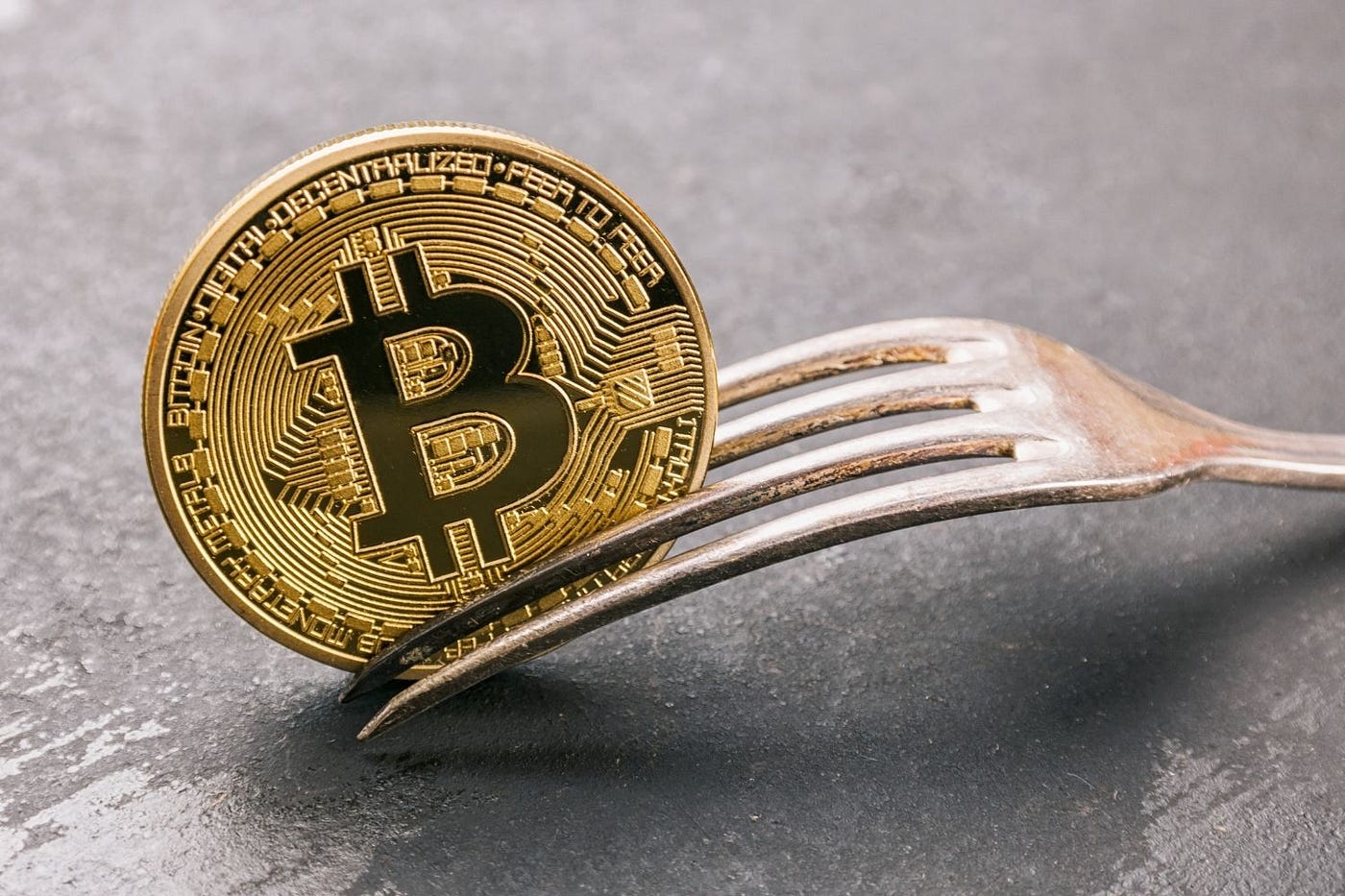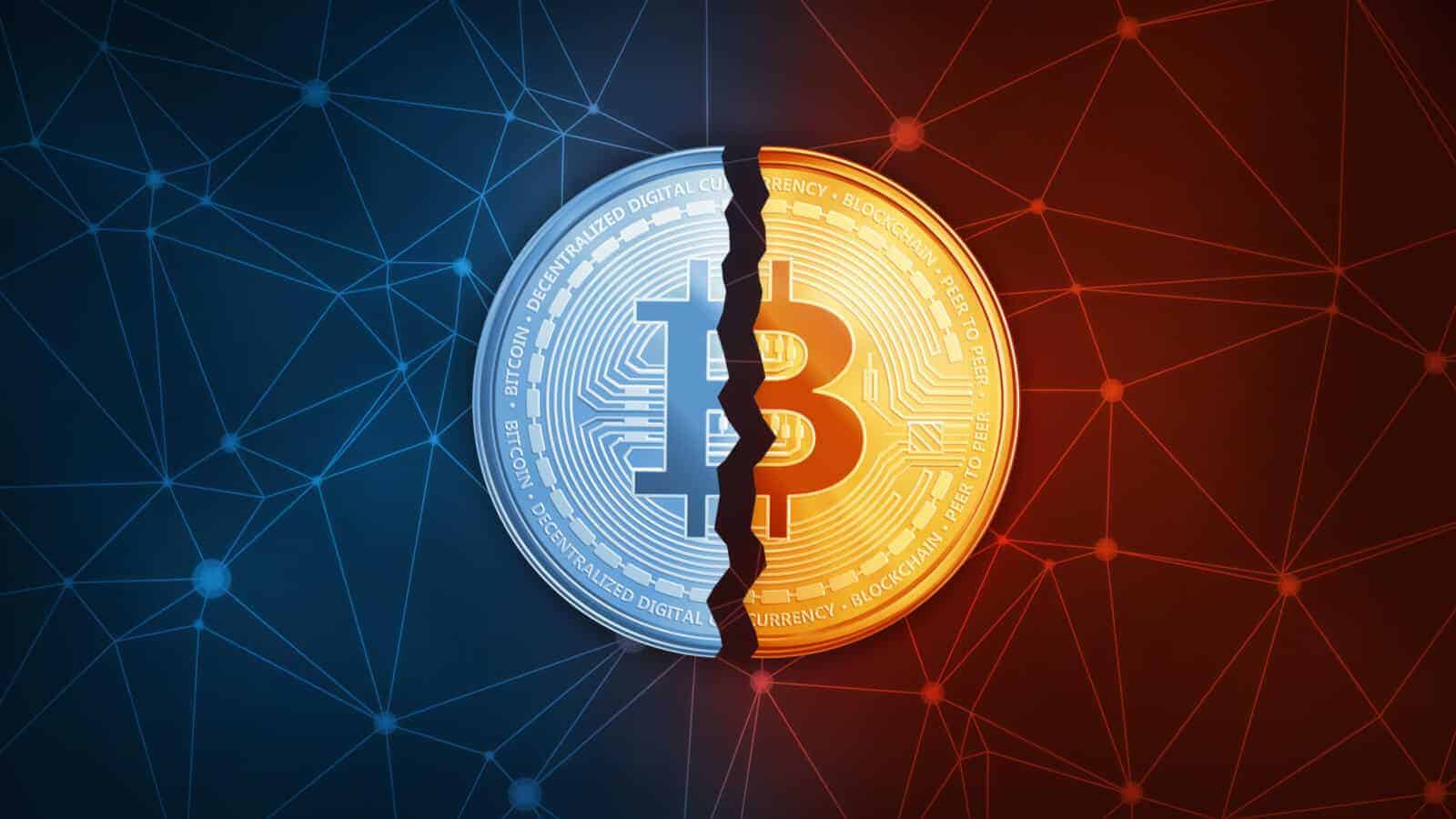Introduction
The term “fork” in the context of blockchain technology refers to the process of creating a new version of a blockchain protocol. This division occurs when there is a substantial disagreement among participants in the network regarding the rules and governance of the blockchain. Forks can lead to the formation of a new independent blockchain, or they can result in changes being made to the existing blockchain.
Blockchain technology has revolutionized various industries, offering decentralization, transparency, and immutability. However, the decentralized nature of blockchain often leads to disagreements on how the network should be upgraded, the development direction, or modifications to the consensus rules. This is where forks come into play, providing a mechanism for blockchain communities to resolve disagreements and adopt changes.
During a fork, the blockchain network splits into two or more branches, creating separate, parallel versions of the blockchain. These branches can have different rules, protocols, and potentially even separate cryptocurrencies. Understanding the different types of forks, their characteristics, and their implications is crucial for grasping the concept of forks in blockchain technology.
In this article, we will explore the definition of a fork in the context of blockchain, discuss the different types of forks, highlight the key differences between them, delve into the reasons why forks occur, examine the risks associated with forking, and look at notable examples of forks in popular blockchain networks.
Definition of Fork in Blockchain
In the world of blockchain technology, a fork refers to the process of creating a divergence in the blockchain network. It occurs when there is a fundamental change in the rules and protocols that govern how the blockchain operates. This change can result in the creation of a new branch of the blockchain, with a distinct set of rules, or it can lead to modifications being made to the existing blockchain.
A fork essentially splits the blockchain into two separate chains, each following its own set of rules. This division can happen for various reasons, such as disagreements over scalability, security, or governance. It provides an opportunity for the blockchain community to make changes to the underlying technology, resolve conflicts, and adapt to evolving needs.
There are two primary types of forks in the blockchain ecosystem: soft forks and hard forks. Soft forks are backward-compatible, meaning they do not require all participants to upgrade their software to continue using the blockchain. On the other hand, hard forks are not backward-compatible, and all participants need to upgrade their software to stay on the same chain.
When a fork occurs, a snapshot of the existing blockchain is taken, and the new version is created based on the changes proposed. Depending on the type of fork, the consensus rules, block size, transaction processing, or other parameters may be altered. This can lead to differences in the validation process, mining rewards, or even the creation of new cryptocurrencies.
Forks can have significant implications for the blockchain ecosystem. They can shape the direction of the network, influence its scalability, security, and functionality, and even impact the value of the associated cryptocurrencies. Therefore, understanding the various types of forks and the reasons behind them is essential to navigate the dynamic landscape of blockchain technology.
Types of Forks
In the blockchain ecosystem, there are two main types of forks: soft forks and hard forks. These forks differ in terms of their compatibility, the level of agreement needed, and their potential impact on the network. Let’s take a closer look at each type:
- Soft Fork: A soft fork is a type of fork that introduces changes to the blockchain rules while maintaining backward compatibility. In other words, it does not require all participants to upgrade their software to continue using the blockchain. With a soft fork, the new rules are more restrictive than the existing ones. This means that blocks and transactions adhering to the new rules will still be accepted by nodes following the old rules. Soft forks typically aim to enhance security, fix bugs, or improve efficiency without causing a complete split in the network.
- Hard Fork: A hard fork, on the other hand, is a type of fork that introduces significant changes to the blockchain rules and is not backward compatible. It requires all participants to upgrade their software to continue using the blockchain. With a hard fork, the new rules are more permissive than the existing ones, meaning that blocks and transactions adhering to the old rules will no longer be accepted by nodes following the new rules. Hard forks can result in the creation of a new, separate blockchain with its own set of rules and even a new cryptocurrency. They are typically driven by disagreements over fundamental aspects of the blockchain, such as consensus mechanisms or governance structures.
While soft forks are considered less disruptive because they maintain compatibility with the previous version, hard forks can have more far-reaching consequences. They can lead to a division in the community, with some participants choosing to stick with the original chain and others migrating to the new chain. Hard forks can also result in a divergence in the mining power, as miners may choose to support one chain over the other. Thus, understanding the differences between these two types of forks is crucial for comprehending the potential impact on the blockchain ecosystem.
It is important to note that both soft forks and hard forks can coexist and occur on different blockchain networks simultaneously. The decision to implement a fork ultimately depends on the consensus of the network’s participants and their vision for the future of the blockchain.
Soft Fork
A soft fork is a type of fork in the blockchain ecosystem that implements changes to the protocol without requiring all participants to upgrade their software. It is designed to be backward-compatible, meaning that nodes running the old version of the blockchain software can still recognize and accept blocks and transactions adhering to the new rules.
In a soft fork, the new set of rules implemented are more restrictive than the existing ones. This means that the soft fork does not introduce radical changes that would lead to a complete split in the network. Instead, it aims to improve the overall security, fix bugs, enhance efficiency, or introduce new features that are compatible with the previous version of the blockchain.
One of the key advantages of a soft fork is its ability to maintain network consensus. Since non-upgraded nodes can still operate on the blockchain, the majority of participants can continue to validate and confirm transactions without disruption. This allows for a smoother and more gradual transition to the upgraded version of the protocol.
An example of a soft fork is the activation of a new rule that reduces the maximum block size limit from 2MB to 1MB. Nodes running the previous version of the blockchain software would still recognize the smaller blocks and continue to validate them, alongside the nodes running the upgraded software. This ensures that the blockchain remains intact, with both versions coexisting without causing a permanent division.
Soft forks are often implemented to address specific issues and improve the efficiency and security of the blockchain network. They allow for incremental upgrades to be made without disrupting the existing infrastructure. However, it should be noted that a soft fork still requires a majority consensus from the network participants to be successfully adopted and widely implemented.
While soft forks are generally considered less disruptive than hard forks, they can still present challenges. Nodes running older versions of the software may become incompatible with the majority, leading to a loss of support and security. Therefore, proper communication and coordination among participants are crucial to ensure a smooth transition and prevent any unintended consequences.
Overall, soft forks play a vital role in the evolution and improvement of blockchain networks. They enable gradual upgrades and enhancements while maintaining compatibility with the previous version, ensuring the integrity and continuity of the blockchain ecosystem.
Hard Fork
A hard fork is a significant and often contentious event in the blockchain ecosystem that results in a divergence from the existing blockchain. Unlike a soft fork, a hard fork is not backward-compatible, meaning that all participants must upgrade their software to continue using the blockchain.
During a hard fork, changes to the blockchain protocol are introduced that are more permissive than the existing rules. This typically involves modifying the consensus mechanism, altering block size limits, or implementing new governance structures. These changes are significant enough to create a separate and independent blockchain with its own set of rules and potentially even a new cryptocurrency.
One of the defining characteristics of a hard fork is that it creates a split in the blockchain network. Some participants choose to follow the new set of rules and operate on the new chain, while others opt to stay on the original chain. This division can lead to the creation of two separate chains, each with its own transaction history and rule set.
Hard forks are often driven by fundamental disagreements within the blockchain community regarding the direction and governance of the network. These disagreements can arise from debates over scalability, security, consensus mechanisms, or even philosophical differences. In such cases, different groups within the community may have differing visions of how the blockchain should evolve and implement changes, which can ultimately lead to a hard fork.
An example of a hard fork is the Ethereum network’s fork in 2016, which resulted in the creation of two separate chains: Ethereum (ETH) and Ethereum Classic (ETC). This fork occurred due to a disagreement over how to handle the consequences of a significant hack on a popular Ethereum-based decentralized autonomous organization (DAO). Some participants supported rolling back the transactions, while others believed in maintaining the immutability of the blockchain.
Hard forks can have far-reaching implications for the blockchain ecosystem. They can create a split in the community and impact consensus, mining power, and overall network security. Additionally, hard forks can lead to confusion among users, as they need to navigate between multiple chains and potentially adopt new wallets or upgrade their software.
Despite the challenges, hard forks provide an avenue for blockchain communities to implement significant changes and address fundamental issues. They allow for divergent paths to be taken and enable participants to support the set of rules that align with their beliefs and principles. However, proper planning, coordination, and communication are essential to mitigate potential risks and ensure a smooth transition for all participants involved.
Key Differences between Soft Fork and Hard Fork
While both soft forks and hard forks are types of forks in the blockchain ecosystem, they have distinct characteristics that set them apart. Understanding the differences between these two types of forks is essential for comprehending their impact on the network. Let’s explore the key differences:
- Compatibility: The primary difference between a soft fork and a hard fork lies in their compatibility with the existing blockchain. A soft fork is designed to be backward-compatible, meaning that nodes running the older version of the blockchain software can still recognize and accept blocks and transactions adhering to the new rules. In contrast, a hard fork is not backward-compatible and requires all participants to upgrade their software to continue using the blockchain.
- Rule Changes: Soft forks introduce changes to the blockchain protocol that are more restrictive than the existing rules. It typically involves implementing new features, enhancing security, or fixing bugs without causing a complete split in the network. On the other hand, hard forks bring about significant changes to the protocol, with the new rules being more permissive than the existing ones. This can involve modifying consensus mechanisms, altering block size limits, or introducing new governance structures.
- Network Split: A notable difference between soft forks and hard forks is the outcome in terms of network split. Soft forks do not create a permanent split in the blockchain network. Instead, they enable both the upgraded and non-upgraded nodes to coexist and continue operating on the same chain. In contrast, hard forks lead to a permanent split, creating two separate chains with their own set of rules. Participants must choose to follow one chain or the other.
- Consensus: Achieving consensus within the blockchain community is crucial for implementing forks. Soft forks require a majority consensus from the network participants to be successfully adopted and implemented. This means that a threshold needs to be reached, where the majority agrees to follow the new rules. In contrast, hard forks often stem from irreconcilable disagreements within the community, leading to a split in consensus. Different groups follow their preferred set of rules, resulting in the formation of separate chains.
- Impact on Participants: The impact on participants differs between soft forks and hard forks. With soft forks, participants who choose to remain on the older version of the blockchain software can continue to validate and confirm transactions without disruption. Conversely, participants in a hard fork must upgrade their software to stay on the same chain, and those who choose not to upgrade will be left on a different chain. This can create confusion and potentially affect the value and usability of the associated cryptocurrencies.
Understanding these key differences is essential for navigating the implications and challenges associated with forks in the blockchain ecosystem. Whether it is a soft fork or a hard fork, the decision to implement a fork requires careful consideration, consensus-building, and clear communication to ensure a smooth transition and minimize disruption within the community.
Reasons for Forking
There are various reasons why forking occurs in the blockchain ecosystem. These reasons stem from disagreements, technological advancements, and the ever-evolving needs of the network participants. Understanding the motivations behind forking is crucial for comprehending the dynamics of the blockchain community. Here are some common reasons for forking:
- Disagreements over Upgrades: Forks often occur when there is a fundamental disagreement within the community regarding proposed upgrades to the blockchain. These disagreements can stem from differences in scalability solutions, consensus mechanisms, governance structures, or the overall direction of the network. When consensus becomes difficult to achieve, forking can be seen as a way to enable different groups to pursue their vision.
- Philosophical Differences: Sometimes, forking happens due to philosophical differences among participants. These differences can revolve around the fundamental principles of decentralization, immutability, or privacy. Participants may hold opposing views on how these principles should be upheld or whether certain compromises are acceptable. Forking allows these differing philosophies to be pursued independently on separate chains.
- Enhancing Security and Efficiency: Forks are also carried out to address security vulnerabilities or to improve the efficiency of the blockchain network. Soft forks, in particular, are often implemented to introduce changes that enhance security, fix bugs, or optimize transaction processing. By upgrading the protocol, developers aim to create a safer and more efficient environment for users.
- Adopting New Technologies: Technological advancements can be catalysts for forking in the blockchain ecosystem. When new technologies or innovative solutions emerge, the community may choose to implement them through a fork to enhance the capabilities of the network. This can include improvements in consensus algorithms, scalability solutions, privacy features, or interoperability with other blockchains.
- Experimentation and Diversity: Forks also allow for experimentation and the exploration of different ideas within the blockchain community. Participants may fork a blockchain to test out new concepts, experiment with alternative consensus mechanisms, or create niche applications on a separate chain. This enables diverse approaches and innovation to flourish within the blockchain ecosystem.
It’s important to note that forking is a reflection of the decentralized nature of blockchain technology. It allows different groups to pursue their desired changes, ideologies, or technological advancements independently. However, forking also brings challenges such as network splits, confusion among users, and potential disruptions. Therefore, careful evaluation, consensus-building, and clear communication are key to successfully navigate the reasons and implications behind forking in the blockchain ecosystem.
Risks and Challenges Associated with Forking
Forking in the blockchain ecosystem comes with its own set of risks and challenges that participants need to consider. While forking can be a means to address disagreements and drive innovation, it also introduces complexities and potential disruptions. Here are some of the key risks and challenges associated with forking:
- Community Fragmentation: Forking can lead to community fragmentation, as participants may have differing opinions on which chain to support. This division can result in a diluted user base, reduced network effects, and potentially lower overall adoption and utility of the forked chains.
- Confusion and User Experience: Forks can create confusion and challenges for users. With multiple chains coexisting, users need to navigate between different wallets, software upgrades, and sometimes even adopt new cryptocurrencies. This can impact user experience, especially for non-technical users who may struggle to understand and adapt to the changes.
- Security Risks: Forks can introduce security risks, especially in the case of hard forks. Splitting the network and creating separate chains can weaken the security of both chains, as the overall network hash rate is divided between them. Additionally, participants need to be cautious of potential vulnerabilities and attacks specific to the forked chains.
- Loss of Consensus and Hash Power: Forking can lead to a loss of consensus and hash power, as the community may divide between supporting the original chain or the new chain. This division could impact the security and integrity of both chains, especially if one chain becomes significantly less supported or vulnerable to attacks.
- Economic Implications: Forks can have economic implications for participants. The value and liquidity of cryptocurrencies associated with the forked chains may be affected, and stakeholders could experience losses if they hold tokens in the less supported or less valuable chain. Additionally, the creation of new cryptocurrencies can introduce additional uncertainties and potential risks.
It’s important for participants to carefully evaluate these risks and challenges before choosing to support or participate in a forked chain. Proper due diligence, research, and understanding of the motivations and vision behind the fork are essential. Additionally, open communication, transparency, and collaboration within the community can help navigate these challenges and minimize their impact.
Forking should be approached with caution and with the goal of finding solutions, resolving disputes, or advancing the technology in a responsible and collaborative manner. The ability to assess and address the risks and challenges associated with forking is crucial for maintaining the stability, security, and success of the blockchain ecosystem.
Forks in Popular Blockchain Networks
Forks have been a common occurrence in the blockchain space, with several well-known blockchain networks experiencing notable forks throughout their history. These forks have shaped the trajectory of these networks and have had significant impacts on the blockchain ecosystem. Let’s explore some examples of forks in popular blockchain networks:
- Bitcoin: Bitcoin, the first and most well-known blockchain network, has experienced several notable forks. One of the most significant forks was the creation of Bitcoin Cash (BCH) in 2017. This fork was driven by differences in opinion on how to address the issue of scalability within the Bitcoin network. Bitcoin Cash aimed to increase the block size limit, allowing for more transactions to be processed quickly and at lower fees.
- Ethereum: Ethereum, a blockchain platform known for its smart contract capabilities, has also undergone important forks. The most prominent one occurred in 2016 when the network split into Ethereum (ETH) and Ethereum Classic (ETC). This fork resulted from a contentious debate surrounding the handling of a high-profile hack on a decentralized autonomous organization (DAO) built on the Ethereum network. The decision to reverse the transactions associated with the hack led to disagreements over the immutability of the blockchain, resulting in the creation of Ethereum Classic.
- Monero: Monero, a privacy-focused cryptocurrency, has undergone several hard forks throughout its history. These forks, known as network upgrades, aim to enhance the privacy and security features of the protocol, as well as improve its resistance to ASIC mining. Notable forks in Monero include the upgrades to the Cryptonight algorithm, which resulted in the creation of MoneroV and Monero Classic.
- Litecoin: Litecoin, often considered the silver to Bitcoin’s gold, has experienced several forks as well. One notable fork is the creation of Litecoin Cash (LCC) in 2018. Litecoin Cash aimed to introduce changes to the mining process and increase transaction speed. The fork created a separate chain with its own set of rules and a new cryptocurrency.
These examples illustrate the diverse motivations and reasons behind forking in popular blockchain networks. Forks have been driven by disagreements over scalability, consensus mechanisms, governance, philosophical differences, and the desire to introduce new features and improvements to the networks.
It is important to note that participation in these forks carries its own risks and considerations. Participants should research and understand the objectives, development teams, and long-term viability of the forked chains before engaging with them.
Overall, forks in popular blockchain networks highlight the dynamic nature of the blockchain ecosystem and its capacity for innovation, adaptability, and disagreement resolution. These forks have shaped the landscape of blockchain technology and provide valuable lessons for participants in navigating the complexities of forking in search of progress and advancement.
Conclusion
Forks play a significant role in the evolution and development of blockchain technology. They allow blockchain communities to address disagreements, implement upgrades, explore new ideas, and drive innovation. Understanding the different types of forks, such as soft forks and hard forks, is essential for comprehending their implications on the blockchain ecosystem.
In this article, we explored the definition of a fork in the context of blockchain, discussed the key differences between soft forks and hard forks, and examined the reasons behind forking. We also delved into the risks and challenges associated with forking, highlighting the importance of careful evaluation and communication within the community.
Additionally, we explored notable forks in popular blockchain networks, including Bitcoin, Ethereum, Monero, and Litecoin. These examples showcased how forks have shaped the trajectory of these networks and emphasized the diverse motivations behind forking.
As blockchain technology continues to evolve, forks will likely remain a natural part of its development. It is important for participants to approach forking with a thoughtful and informed mindset, considering the potential risks, impacts, and long-term viability of forked chains.
In summary, forks in the blockchain ecosystem serve as mechanisms for resolving disagreements, implementing changes, and driving progress. They exemplify the decentralized nature of blockchain technology and provide opportunities for innovation and diverse approaches. By understanding the nuances of forking, participants can navigate the challenges and opportunities that arise, ultimately contributing to the growth and advancement of the blockchain ecosystem.

























